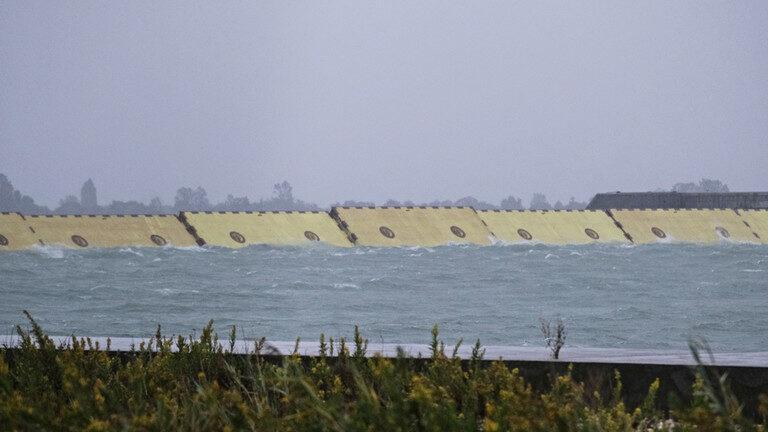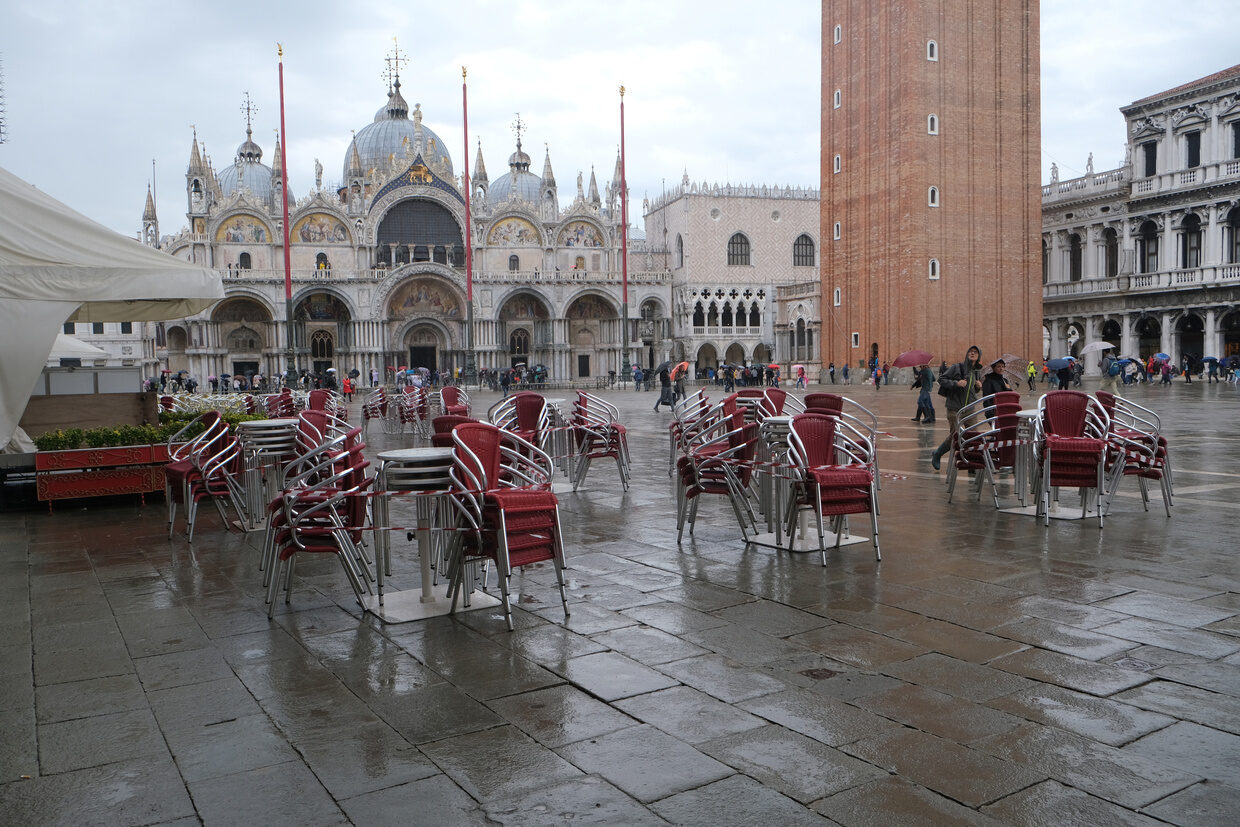
The MOSE (Experimental Electromechanical Module) project barrier was deployed at the entrance to the Venetian lagoon on Saturday as the Italian city braced for an incoming storm and high tide. The network of 78 yellow barriers emerged from the sea bed some three hours before water was expected to come.
The barrier is designed to protect the city from tides of up to three meters (9.8 ft) high. The Saturday tide was forecast to be merely 1.3 meters (4.27 ft) high, which is enough to flood the lowest parts of the city, yet significantly less than the worst-recorded floods that nearly reached the two meter (6.56 ft) mark.
The barrier worked, stopping the tide from entering the city. Imagery from the scene shows its streets remained rather dry - except for being washed by rain.

The barrier was first tested back in July and its creators deemed the structure ready for actual use during bad weather.



R.C.